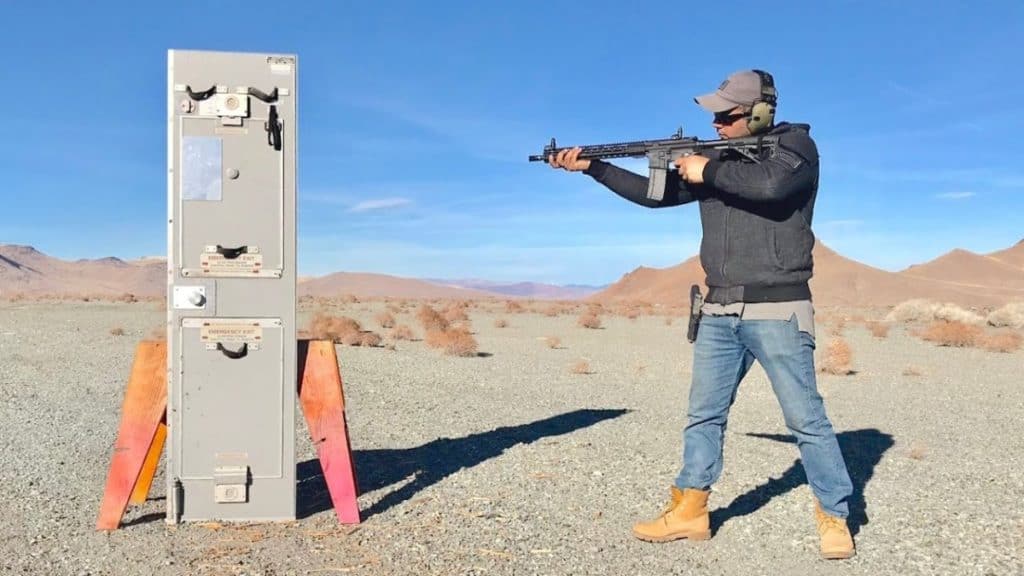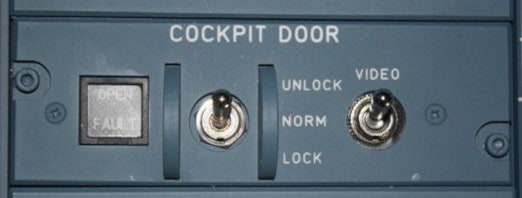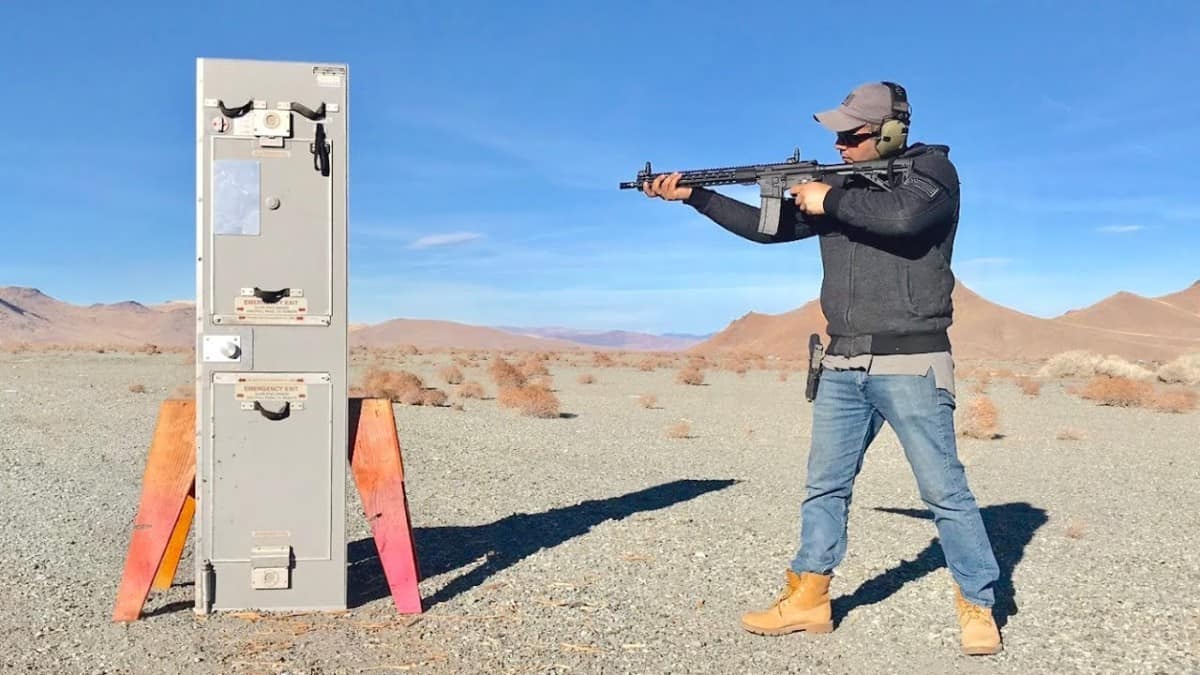
Modern cockpit doors on aircraft are built to be extremely secure. The September 11 attacks in the United States sparked a major security shakeup across the aviation industry, resulting in cockpit doors on commercial airliners becoming intensively strengthened.
Since October 5 2001, the FAA requires that the cockpit bulkhead and door must be designed to resist penetration by small arms fire and fragmentation devices. This ruling has now been relaxed by the FAA meaning some cockpit doors are not bulletproof but are still much stronger than previous doors.
In November 2001, about two months after 9/11, bulletproof cockpit doors were installed on a Virgin Atlantic flight on its way to New York. Virgin Chairman Richard Branson had said that the “most important thing” was that people felt “100% safe about traveling”. He said, “We are making sure that people who should not be in the cockpit do not get access to it”.
Similarly, JetBlue Airways announced the introduction of bulletproof cockpit doors on their aircraft in October 2001, a month after the deadly attacks in New York, Virginia, and Pennsylvania. The airline said that bullets won’t be able to penetrate the door, nor would somebody swinging an axe be able to cut through it.
How Armored are Cockpit Doors?
Cockpit doors installed on most commercial aircraft comprise of high-strength, lightweight composites with each door costing in the range of $30,000 to $50,000. Some cockpit doors are plated with stainless steel or titanium and even lined with bulletproof Kevlar fabric panels for extra protection.
For added layers of safety, other measures include installing kick-proof grills, specialized hard-to-grip door handles (great for thwarting a terrorist’s attempt to gain leverage), and clear acrylic one-way windows to give pilots a bulletproof bird eye view of the cabin.
Each aircraft manufacturer and independent door manufacturers have many designs to allow airlines to pick the level of security they require for their cockpit doors.
What Can Cockpit Doors Withstand?
Below is a list of requirements that most cockpit doors are designed to withstand:
- Fists or blunt instruments pounding on the door
- Shoulder barging or body checking against the door
- Bullet penetration from small arms fire
- Explosive charges
- Impacts from knives and axes
The design of the doors and bulkheads using a mixture of composite materials and structural components provide for nearly impossible entry through a new fortified door. Any explosive device large enough to penetrate a cockpit door would be enough to puncture the fuselage leading to rapid decompression of the cabin.
Learn More…
Try These Articles:
* Can a Plane Land Itself?
* Why Are Airplane Lavatories So Loud?
How are Cockpit Doors Locked?
The locks on commercial aircraft cockpit doors are designed so that only the pilots, who are inside the cockpit, can unlock them. They consist of time delays to the electro-mechanical locks and alpha-numeric keypads to allow for emergency access only if authorized by the pilot/s.
These days, not only do pilots have prime access to the cockpit but they also have the power to deny anyone unauthorized to enter it. In an emergency, such as when a pilot is incapacitated inside the cockpit, other cabin crew members are typically allowed to get inside by entering a code in a touchpad just outside the cockpit door. If a terrorist happens to have the code, a pilot can also deny access through a time-delay mechanism.

On certain aircraft, pilots can operate three modes of the cockpit door’s locking system from their seats:
- Normal
- Lock
- Unlock
When the Normal mode is activated, the door is locked. After thirty seconds of delay, it can only be accessed by a cabin crew from the outside by using the touchpad.
In Locked mode, any code that is entered into the touchpad is ignored and the door will remain locked at 5-minute intervals.
A pilot will use the Unlocked mode for opening the cockpit door and allowing the second pilot to enter after their bathroom break or a flight attendant to bring them their meals and drinks.
When Did Armored Cockpit Doors Become Mandatory?
Following the 9/11 attacks, on October 9 2001, the FAA issued a series of Special Federal Aviation Regulations (SFAR’s) requiring all commercial aircraft carrying over 20 passengers to install short-term cockpit door fortification within 45 days and a permanent fortification system within 18 months.
Over 4000 US-Registered aircraft completed this initial fortification of their cockpit doors within 30 days to help passengers feel safe and return to the air. The total cost for the retrofit cost US airlines over $100m over the following 10 years.
For aircraft under 20 seats the space, weight, and cost make the retrofit uneconomical and unnecessary. The risk and damage posed by a small aircraft being hijacked were far outweighed by the financial burden placed on the small airlines making minimal profits.
You can find a comprehensive fact sheet that was issued by the FAA in September 2002 outlining the fortification requirements and grants available to the airline industry HERE.

Join My Newsletter & Get Great Tips, Information and Experiences To Help You Become a Superb Pilot!
Can a Pilot be Alone in a Cockpit?
In the US it is mandatory for a 2 crew cockpit to be manned by two company personnel at all times during the flight. In Europe and Asia, this ruling is not mandatory. If a pilot has to leave for a bathroom break a flight attendant must be present in the cockpit during their absence.
Since the 2015 accident of the Germanwings Flight 9525 where the Co-Pilot Andreas Lubitz took control of the aircraft and purposely crashed the aircraft after the Captain left the cockpit for a bathroom break, the US mandated that no pilot could be left alone during flight operations.
Not only does this allow the flight attendant to help in the event of a medical emergency of the flying pilot but also allows the cockpit door to be opened from inside the cockpit preventing a reoccurrence of the Germanwings tragedy.
Outside of the US, each company has the discretion to the operation of two persons in the cockpit at all times. For commercial flights operating with only a single pilot, the cockpit usually has no door and the aircraft is not larger enough to require a flight attendant to be onboard.
Learn More…
Try These Articles:
* Do Pilots Always Fly With the Same Copilot?
* This Is Why Plane Windows Are So Small!


